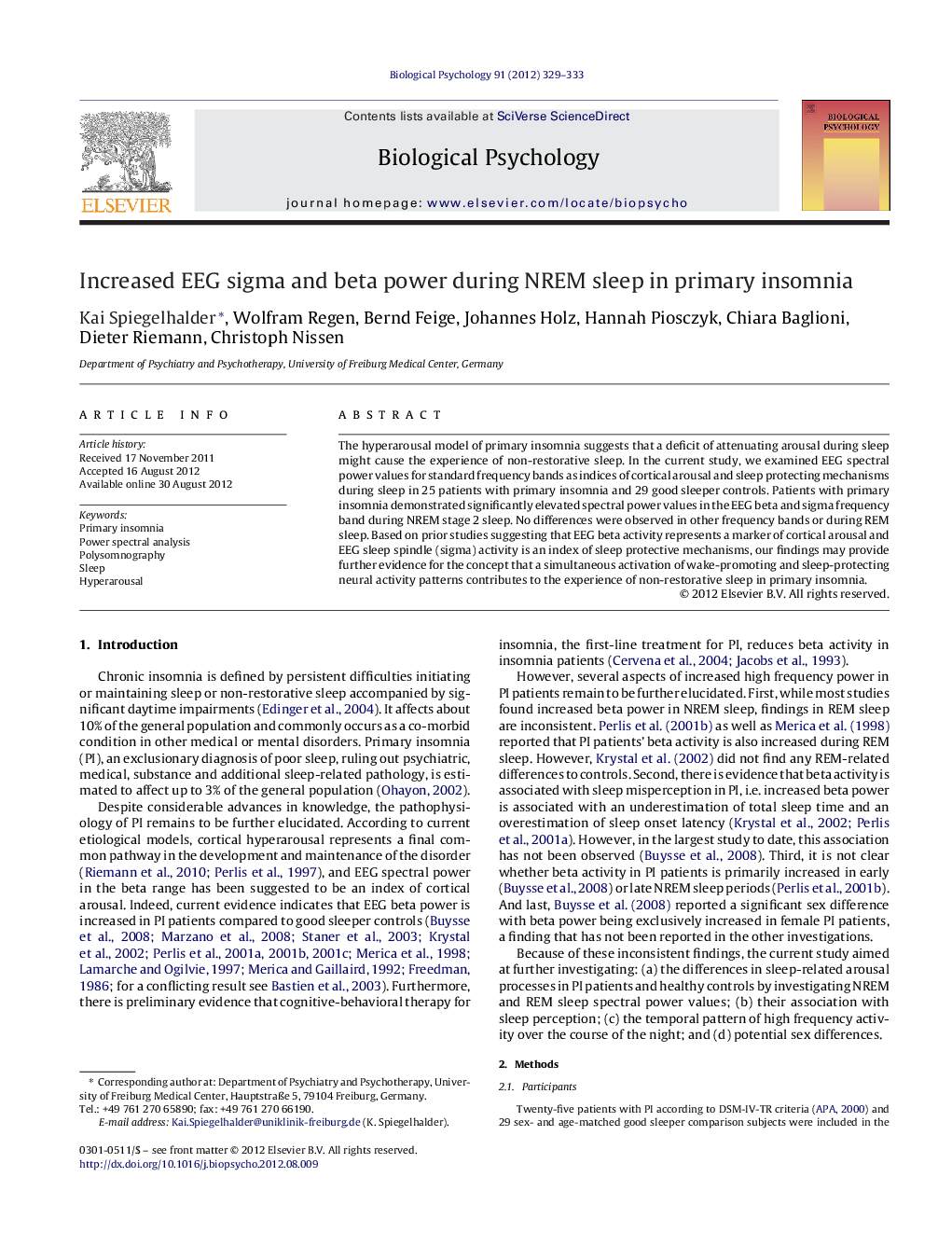| Article ID | Journal | Published Year | Pages | File Type |
|---|---|---|---|---|
| 921040 | Biological Psychology | 2012 | 5 Pages |
The hyperarousal model of primary insomnia suggests that a deficit of attenuating arousal during sleep might cause the experience of non-restorative sleep. In the current study, we examined EEG spectral power values for standard frequency bands as indices of cortical arousal and sleep protecting mechanisms during sleep in 25 patients with primary insomnia and 29 good sleeper controls. Patients with primary insomnia demonstrated significantly elevated spectral power values in the EEG beta and sigma frequency band during NREM stage 2 sleep. No differences were observed in other frequency bands or during REM sleep. Based on prior studies suggesting that EEG beta activity represents a marker of cortical arousal and EEG sleep spindle (sigma) activity is an index of sleep protective mechanisms, our findings may provide further evidence for the concept that a simultaneous activation of wake-promoting and sleep-protecting neural activity patterns contributes to the experience of non-restorative sleep in primary insomnia.
► Primary insomnia (PI) patients have elevated EEG beta and sigma spectral power. ► Increased beta and sigma were found during NREM sleep but not during REM sleep. ► EEG beta activity represents a marker of cortical arousal. ► EEG sleep spindle (sigma) activity is an index of sleep protective mechanisms. ► Simultaneous activation of wake-promoting and sleep-protecting neural activity in PI.
